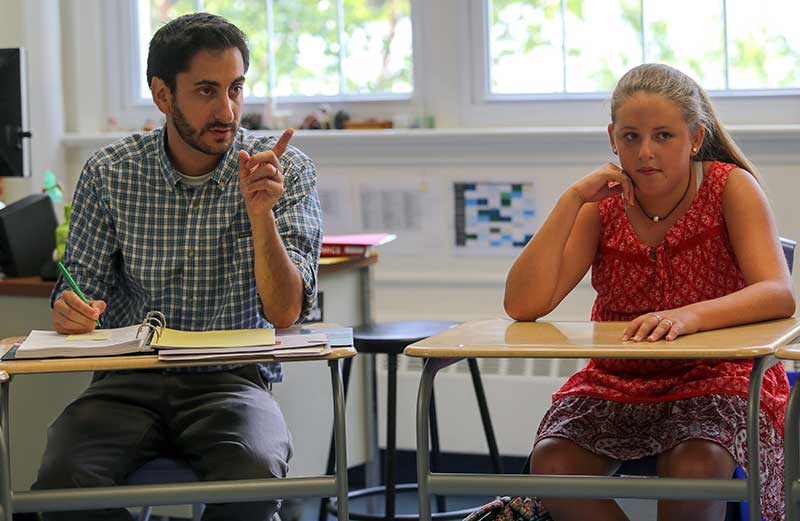from the desks of Middle School Advisory Program Coordinators Tina Corsey and Jake Greenberg
Middle School is often when kids begin to figure out who they are and who they want to be. In order to provide students the space to feel comfortable while navigating this journey of self-discovery, Middle School Advisories form familial-like groups that aim to be safe and supportive. A delicate balance of structured curricular activities combined with a fun and relaxed atmosphere help set the tone. During the past several weeks, middle school students used their advisory periods to examine their own identities and engage in discussions with their peers.
In mid-December, students in grades five through eight were invited to bring in food or an object to share with their advisories to represent a part of their culture or a holiday tradition that is important to their family. This provided a fantastic opportunity to celebrate the similarities and differences within the Middle School Advisories.
The following week students developed their own “Identity Circles.” The activity, provided by Karen Washington, the Director of Diversity and Inclusion, is designed to allow students to first work independently to brainstorm the dimensions of their own identities that are most important to them. Some examples students wrote were about being an athlete, a big brother or sister, a volunteer, or being a particular race or religion. In pairs, and then as a whole group, the members of the advisory anonymously shared stories first about times they were proud, and later when it may have been painful to identify themselves in these ways. The activity concluded with the Middle School Advisories debriefing the experience — what it was like to share their own stories and hear others’ too.
The concluding activity in this series was called “Where We Stand” and comes from the website Teaching Tolerance. In this activity, students responded to a variety of scenarios and actions that are quite relevant to students’ lives. The events described issues of exclusion, bullying, and navigating friendships. Students were asked to think about how they would react in these situations and what they might do to help others. While beginning to clarify their own values, students were also asked to collectively define the words “bystander,” “up-stander,” and “whistleblower.” Students identified that a culture where kids are not supposed to “tattle” on their peers is not as healthy as one where students stand up for those who have less power in difficult social situations. Once again, the activity concluded with a short debrief. It is through activities such as these during Middle School Advisories that we continue the important work of building and strengthening the middle school community at MFS.

